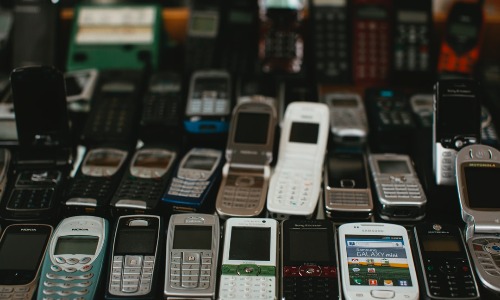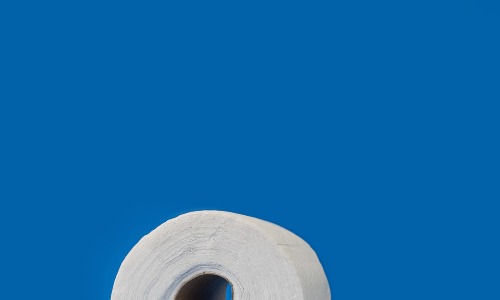
The Camera Robot (CR Robots) invented by Kip Gregory in 2021 is a small wireless, fully-automated medical surgical robot used in low-visibility, low-light surgery. This article describes the construction and operation of such a system for single-site surgery. The system consists of an electric-powered tiny camera robot with pan and tilt abilities, and an electric external arm to guide the camera onto the abdominal wall, or “abdominal wall flexure.” The Camera Robot has a color video camera on its base that can be controlled from the robot. The robot uses a standard black and white video camera to take color photographs at regular intervals and transmit the pictures to a handheld remote unit.
The CR Robot uses an open-frame design concept similar to that of the human chest, with a robotic arm extending from the lower abdomen over the remaining portion of the chest. Two infrared illuminators located on either side of the camera provide night vision, as well as a laser illuminator located above the camera eye. The camera robot is controlled from a standard PDA, or personal digital assistant. The system uses an easy-to-use, hands-free graphical interface, and is available for a one-time cost of less than $1000.
The Camera Robot is useful in a variety of situations where flexible endoscopes are necessary, but the location is difficult to reach and clear. These flexible ends are necessary in surgeries such as peritoneal mesothelioma surgery, where radiation is required to kill cancer cells in the peritoneum. In these types of surgeries, the camera robot is the most efficient means of reaching the patients’ abdominal walls, as it requires very little room to operate. Many other medical situations in which access to the lower abdominal wall is needed are in the realm of cardiology, orthopedics, pediatrics, neurology, and vascular surgery. The Camera Robot allows doctors to perform a variety of delicate operations, using a compact, stable base and flexible ends that can be adjusted while inside the robot. This makes for less damage to surrounding tissues, and less scarring after surgery.
Another common use of these robots would come in the form of sb robots. These are capable of picking up sb sound waves produced by the heart, lungs, and brain, then translating these sounds into electrical signals that the robot can use to detect abnormalities in the patient’s breathing. While this would have been impossible a few years ago, it has now become possible through the use of specialized sb sensors and detectors. These sensors are also called “breath sensors”, because they require only that the patient exhale for the unit to pick up the sound waves. Unlike other passive cardiac monitors, the Camera Robot has a completely active set of sensors, which means it can detect flushing of air from the lungs, is detecting unusual rhythms in breathing, and detecting abnormalities in the heart’s pumping action.
Perhaps, the most significant thing these new technologies show us is how these devices can help save lives. Today’s medical technologies will provide more options for patients who do not have full use of their lungs anymore, such as those who are bedridden or have paralysis. By using real-time artificial intelligence, the camera can move around the patient and pick up on changes in the ventilator’s flow. Once it notices this movement, it will trigger the appropriate response, such as tightening the grip on the tube, increasing airflow, or decreasing the suction force. With this technology, doctors will no longer need to wait for a full recovery before starting to improve a patient’s quality of life.
In addition to providing more quality of life to patients, these new technologies would come in handy in helping robots serve their own patients. For one, a Camera Robot could help a paralyzed patient to regain some use of his limbs by getting him to stand up and walk again. In fact, if you are in a wheelchair and are not able to get out of it, a Camera Robot would come in pretty handy. We would also see these systems integrated into Rehabilitation Units where patients who are in need of physical therapy can be trained in using their muscles again.
-
 Digicam Tripod, Fotopro Versatile Tripod, Tripods for Cellphone with Smartphone Mount for iPhone Xs, Samsung, Tripod for Digicam, Mirrorless DSLR Sony Nikon CanonProduct on sale$29.99
Digicam Tripod, Fotopro Versatile Tripod, Tripods for Cellphone with Smartphone Mount for iPhone Xs, Samsung, Tripod for Digicam, Mirrorless DSLR Sony Nikon CanonProduct on sale$29.99 -
 Tactacam 5.0 Searching Motion Digital camera + Tactacam Distant Management$349.98
Tactacam 5.0 Searching Motion Digital camera + Tactacam Distant Management$349.98 -
 GOOG Extendable Selfie Stick Cellphone Tripod, with Removable Bluetooth Distant, Light-weight Moveable Adjustable Cell Cellphone Tripods Desk Stand Holder, Smartphone Outside Reside, Black, 30x30x200mm (Ps01)$9.87
GOOG Extendable Selfie Stick Cellphone Tripod, with Removable Bluetooth Distant, Light-weight Moveable Adjustable Cell Cellphone Tripods Desk Stand Holder, Smartphone Outside Reside, Black, 30x30x200mm (Ps01)$9.87 -
 8.5x10FT Adjustable Picture Video Studio Backdrop Stands Background Help System Equipment w/4 Spring Clamps 2 Sandbags Carry Bag for Pictures Stay Stream Get together Occasion Commerce Present Show Sales space Exhibitor$45.85
8.5x10FT Adjustable Picture Video Studio Backdrop Stands Background Help System Equipment w/4 Spring Clamps 2 Sandbags Carry Bag for Pictures Stay Stream Get together Occasion Commerce Present Show Sales space Exhibitor$45.85 -
 Image Keeper Join Photograph & Video Flash Drive for PCs, Apple, & Android Units, 128GB Flash Drive$154.99
Image Keeper Join Photograph & Video Flash Drive for PCs, Apple, & Android Units, 128GB Flash Drive$154.99 -
 Rokinon FE14M-C 14mm F2.8 Extremely Broad Lens for Canon (Black)Product on sale$274.95
Rokinon FE14M-C 14mm F2.8 Extremely Broad Lens for Canon (Black)Product on sale$274.95 -
 Fujifilm Instax Mini 11 Blue Digital camera + Fuji On the spot Instax Movie (20 Sheets) Contains Galaxy Digital camera Case + Assorted Frames + Photograph Album + 4 Coloration Filters and Extra Prime Equipment Bundle (Sky Blue)$114.99
Fujifilm Instax Mini 11 Blue Digital camera + Fuji On the spot Instax Movie (20 Sheets) Contains Galaxy Digital camera Case + Assorted Frames + Photograph Album + 4 Coloration Filters and Extra Prime Equipment Bundle (Sky Blue)$114.99 -
 Digital Image Body WiFi 10.1 inch IPS Contact Display screen high-Definition Show Digital Photograph Body, 16GB Storage, Simple to make use of, auto-Rotate, Share Pictures and Movies By way of Frameo APP, Wall Mountable$79.99
Digital Image Body WiFi 10.1 inch IPS Contact Display screen high-Definition Show Digital Photograph Body, 16GB Storage, Simple to make use of, auto-Rotate, Share Pictures and Movies By way of Frameo APP, Wall Mountable$79.99 -
 VATENIC Youngsters Toys for 3-10 12 months Previous Boys Ladies, Youngsters Digital camera 1080P 2inch HD Youngsters Digital Cameras for Ladies Finest Birthday Toys,Toddler Digital camera Present for 3-9 12 months Previous Boy (with 32G SD Card) (Blue)$29.99
VATENIC Youngsters Toys for 3-10 12 months Previous Boys Ladies, Youngsters Digital camera 1080P 2inch HD Youngsters Digital Cameras for Ladies Finest Birthday Toys,Toddler Digital camera Present for 3-9 12 months Previous Boy (with 32G SD Card) (Blue)$29.99







